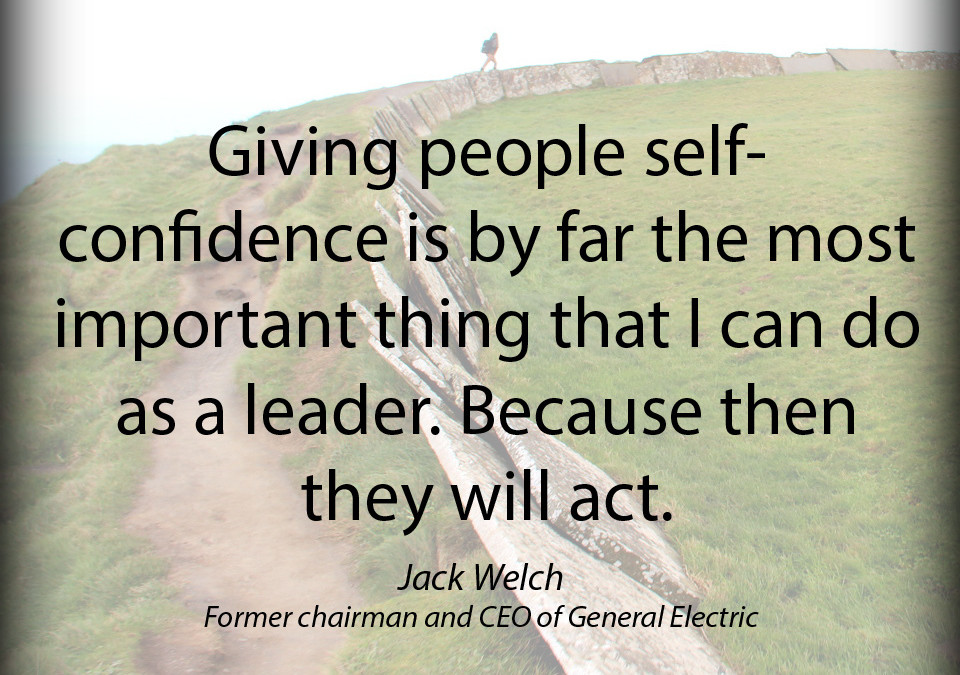 Feedback is one of the most vital stepping stones of our journey to success. Yet, in our minds, the word “feedback” carries a negative connotation. The reason is because most of our experiences with it focus around criticism rather than positive/reinforcing feedback and what/how we could do better.
Feedback is one of the most vital stepping stones of our journey to success. Yet, in our minds, the word “feedback” carries a negative connotation. The reason is because most of our experiences with it focus around criticism rather than positive/reinforcing feedback and what/how we could do better.
True leaders understand the power of feedback, but they always make sure that the delivery of feedback is constructive. They also strike a great balance between providing positive reinforcement and constructive feedback. It is essential to ensure that your employees know how valuable they are and how the extraordinary work they are doing impacts company’s success.
As far as constructive feedback goes, most employees will appreciate you taking time to deliver a thoughtful and honest feedback, even if that’s not the feedback they want to hear. But here are several important things to remember if you want your employees to take you seriously and act upon your feedback:
Genuinely care. Here is the important part: they need to know that, as a leader, you truly care. People know when you are putting up smock and mirrors. If they know you are not genuinely concerned about their growth, they’ll tune out.
Clearly paint your vision. You need to be clear about what you want done and why you want it done. You need to paint the clear picture to help them envision future post-change and their role in it.
Provide real-life examples. Make it relevant to them by providing examples, as well as lessons from your own experience.
Be honest. Whether positive or negative, feedback must be honest. People see right through the BS. You can’t sugarcoat it: “What you’ve done is fantastic, but…” You must lose the “but”s! Period, end of story. Be considerate in your delivery, but don’t embellish.
Be credible. If you want the feedback to be credible and for your employees to listen to you, you have to spend time in understanding what they do, take time to observe how they do it. You can’t be the new guy barging in and trying to drive change without knowing and appreciating the work of your people. You have to spend time building the rapport and putting in the sweat if you want your employees to respond to your direction and to your feedback in a meaningful way.
Lead by example first. You gotta walk the talk. If you want to council people, you have to be able to lead by example (or at least not showcase the negative example). If you recognize that that’s the area you are also deficient in, offer that up and identify it up front. It’s all about being transparent. People get it.
I talked to an executive once about the power of investing in your people and he offered up this story. “I had an employee who wasn’t cutting it. Not because he wasn’t smart, but because it seemed like his heart wasn’t in it any more. So I worked with him for a number of months to outline the things that needed to be done and results that needed to be achieved. And then I said: ‘If you feel like you can’t get there, then let’s look for a more suitable role for you.’ After a while it became clear that this wasn’t a great fit for him, so we found him a role that might be. A while later he stopped me in the hallway and thanked me for my guidance. He said he was happier than he ever was and that he found his calling. And his new manager was extremely satisfied with his performance. That, to me, is what leadership is all about – growing your people, and through that, your business.”
Providing constructive feedback successfully is heavily contingent on delivery. But how do you learn how to provide feedback effectively?
In his book “Hundred Percenters: Challenge Your Employees to Give It Their All and They’ll Give You Even More” Mark Murphy suggests leaders use IDEALS technique he developed to guide leaders in giving constructive feedback. “Leaders know that feedback is not about being nice, and it’s not about being nasty; it’s about getting folks to willingly listen and assimilate and to act accordingly,” he says.
IDEALS script is a six-step process that allows constructive feedback to penetrate even the most unwilling of ears and that keeps people motivated during and after the feedback is delivered.
- Invite them to partner. Express an openness to a dialogue and hearing the other side of the story. Say something like: “Would you be willing to have a conversation with me about XYZ? Does right now work, or would you rather wait until after lunch?” Invitation such as this one conveys a nonconfrontational situation and enhances receptivity to the invitation, especially if it’s delivered in a relaxed tone and friendly body language. Plus, most people feel safer and perform better when they are given choices.
- Disarm yourself. If employees suspect that criticism is going to be a part of the experience, they’ll likely enter the conversation with some anxiety. Disarming yourself of judgment can be done by pausing mid-conversation and saying something like: “I’d like to review the situation to make sure I’m on the same page as you.”
- Eliminate blame. Instead of assigning blame, focus on solutions by saying something like: “I see we have very different opinions on this. That’s fine. But let’s work together to find a resolution.”
- Affirm their control. In order to keep people engaged in a conversation, it’s critical to reaffirm that they have some control over the situation. Do this by regularly asking “Does that sound okay?” as conversation progresses.
- List corrective feedback. Keep your feedback specific and understandable; make sure it holds up to logical scrutiny and clearly explains why there are being asked to do something.“The behavior I am seeing is XYZ, and what I need to see is ABC.”
- Synchronize your understanding. Keep the dialogue open by saying: “Tell me how you think we can work together to build on this and make things more effective next time.”

Even though delivery is critical, credibility is truly what gets the message heard. One employee once said this about her manager: “Why would I listen to any advice/feedback my manager is trying to give me professionally? He didn’t build up any stock in our relationship, I have zero respect for him because I haven’t seen him to be the leader he is supposed to be to this team and act on the principles he is trying to preach.”
So before you have these conversations with your employees ask yourself this – do you exemplify all the behaviors you want your employees to display? That’s where being open to have a two-way conversation with your employees and seeking their feedback on your performance as a manager becomes even more critical than delivering theirs.
Originally posted in Forbes

